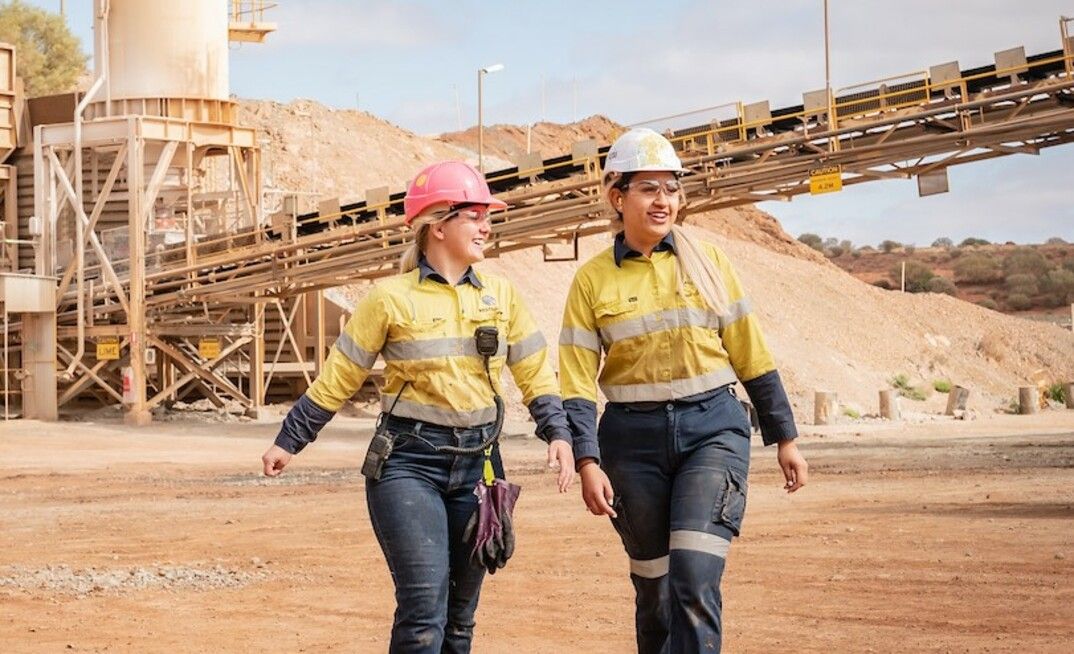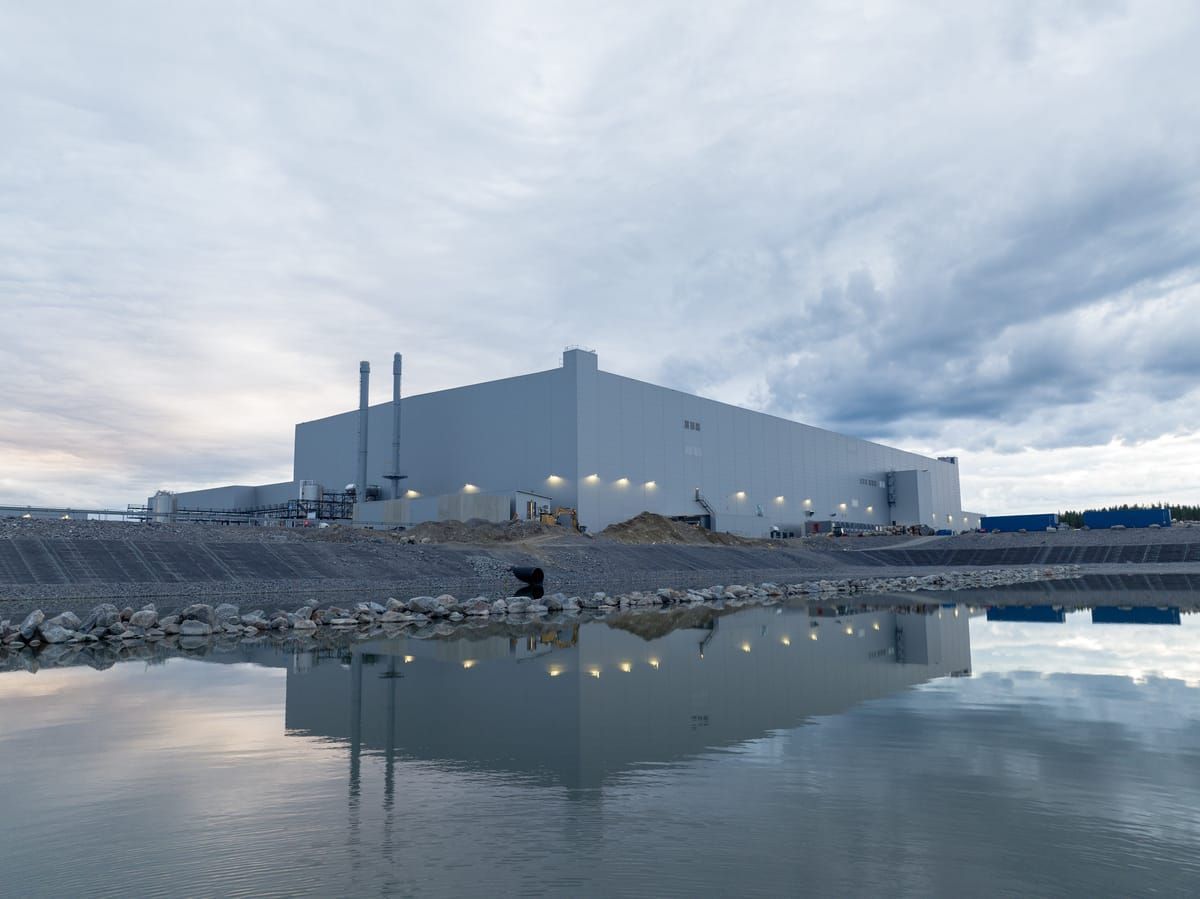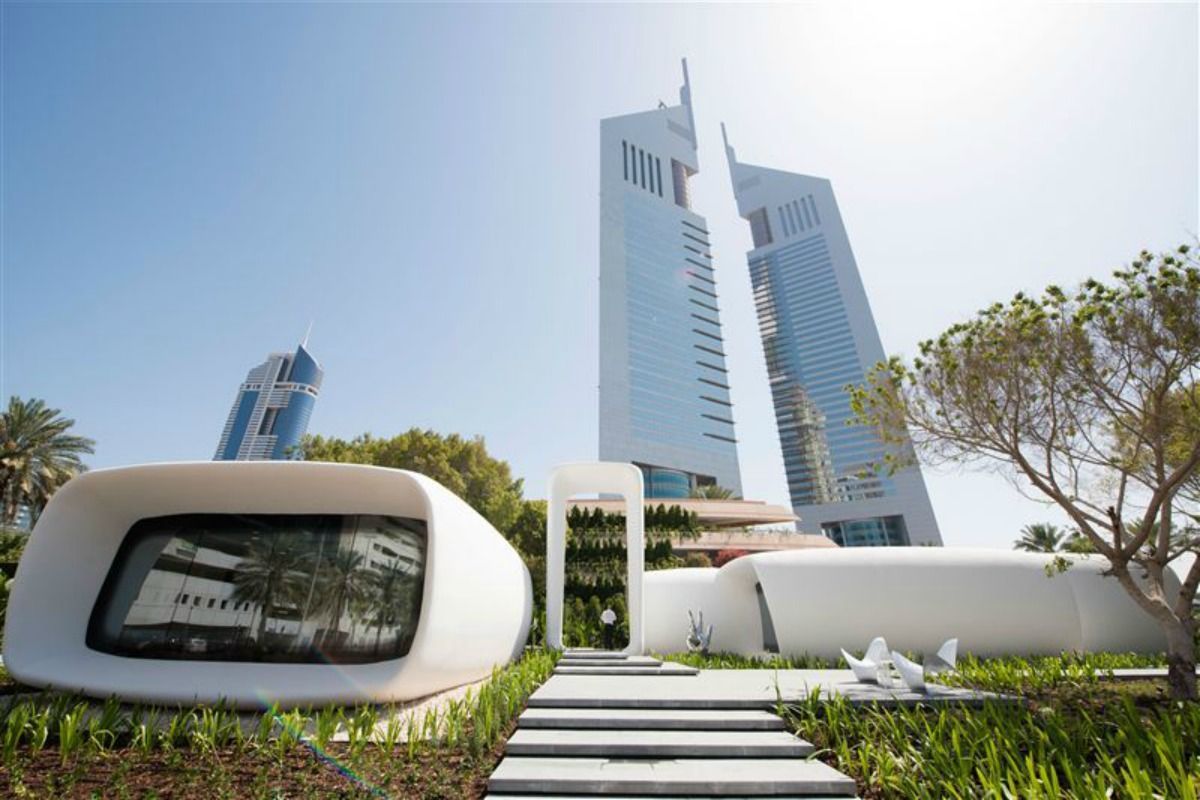News
What is going on in the industry? What are the latest trends? What are we doing?

September felt like the wrong kind of time travelling. Only backwards. For those of a certain age, the bankruptcy of Tupperware the food storage icon, the lethal mass-destruction of Hezbollah’s paging devices in Lebanon and a US President escaping two assassination attempts for the first time since the 1970’s were flashbacks to very troubled Cold War decades, political volatility and inflationary times. Hmmm…on second thoughts…..maybe not much has changed. And yet, the professional analysts of those challenging times never saw the imminent collapse of the Soviet Union, a mobile digital revolution and forty years of lower interest rates coming. Lesson learned on pessimism hiding progress? Let’s fast forward to today. Perhaps, the bigger existential threat (vs nuclear war) for our planet is climate change and an urgent battle to electrify and decarbonise the global economy. But, the headlines on that battle have darkened too, and not just with catastrophic flooding in Europe and similar destruction in the US post-Hurricane Helene. The decarbonising poster child of the global economy has been the automobile transition away from internal combustion engines (ICE) to battery-powered electric vehicles(EVs). Transition progress up to last year had confounded the commentariat, as sales penetration rates for EVs kept beating forecasts and rocketed from 2% of total sales in 2018 to 18% just 5 years later. Research data from Bloomberg forecast a 33% rate of penetration by 2027 but the media have switched tone. Now, the wording is all about slowing, cooling, delaying, abandoning or even failing. Check out these headlines of recent months: Europe Battery Factory Plans Are In A Shambles – Cleantechnica Ford Shrinks Its EV Rollout Plans As Demand Lags – Wall Street Journal EV Slowdown Steers World Further Off Course From Net Zero – Bloomberg Toyota Cuts 2026 Global EV Output By A Third – Reuters Tesla Sales Fall For second Straight Quarter – The Guardian BMW Cancels $2 billion battery cells contract with Northvolt – Reuters The final headline was a precursor to much bigger headlines for Northvolt in recent weeks. Having raised $15 billion of financing, Sweden’s Northvolt is possibly Europe’s highest profile project with a mission to be an all-in-one shop offering everything from material production and battery making to end-of-life recycling. Those full-cycle ambitions are now ‘on hold’ as the company seeks to put the enterprise on a more secure financial footing. The Guardian summarised the remedial actions as follows: “The Swedish batterymaker Northvolt is to cut 1,600 jobs, in response to “headwinds” blowing through the electric car industry. The battery company announced redundancies across three of its sites on Monday, including 1,000 in Skellefteå, in northern Sweden, where it is suspending the expansion of Northvolt Ett, Europe’s first homegrown battery gigafactory. The company, which has been seen as Europe’s most promising contender to China’s producers, will also cut 400 jobs in Västerås, in central Sweden, where Northvolt Labs is based, and 200 in Stockholm, home to its head office. Peter Carlsson, the company’s chief executive and co-founder, insisted that “overall momentum for electrification remains strong” but that “tough” decisions were needed to ensure the company’s future” There is no sugar-coating that messaging. However, we should remind ourselves that EV battery manufacture has huge technological hurdles and is subject to customer demand and supply chain risk, while trying to keep pace with phenomenal adoption growth rates and a global supply chain land grab. In a more mature sector, battery production would be a classical cyclical manufacturing activity. Now, consider the pace of technology change and the global shift in consumer behaviours. Anyone reminded of the semiconductor chip manufacturing sector? Think back to the 2000s and the huge highly risky investment in fab factories required while the global economy hurtled into the digital age. For years the financial market orthodoxy was that semiconductor chip sector stocks like AMD, Intel, Micron, Samsung, TSMC, ASML, Broadcom or Nvidia should NEVER be owned by investors, only traded. Tell that today to Jensen Huang and his colleagues at the 3 trillion dollar Nvidia chip superstar which is now described as more important to the world economy than the US Federal Reserve. Hyperbole certainly, but this elevation illustrates the emotional rollercoaster the media try to create for an audience gasping at yet another manufacturing rockstar following in Apple’s and Tesla’s footsteps. So too should we be conscious of emotions, and media neediness in the coverage of EV’s cyclical misses and growth bumps. Those nascent bumps and bruises should always be considered in the context of a structural super-cycle for EVs and batteries with a 2050 Net Zero end-game. More specifically, readers should think about how numbers and percentages can tell a story, or not. Also, we should know that the ICE to EV transition is two stories, not one. Try these numbers for size and perspective…. *EV sales are still growing, just not at year-on-year doubling rates (20% vs 100%). *Slowing growth rates on much larger sales bases are still very big numbers. 12 million zero emission vehicles likely to be sold globally in 2024. *The media headlines will say Norway’s EV sales only grew 5% in August. But, you probably won’t read that EVs had 94% market share in Norway last month! *Electric cars and trucks make up 60% of all new vehicle sales in China. *BMW has just passed out Tesla on EV sales in Europe. Tesla sales in Europe are actually off 16% but you probably won’t read that on Twitter/X….as chaotic leadership starts to hurt brand. *Now the story that nobody reads. Global fossil-fuel ICE vehicle sales are DOWN by 25% since 2017, and the global ICE vehicle fleet is set to peak in 2025. *Oh, and 97% of Chinese consumers say their next vehicle will be all-electric. The cyclical aspect of manufacturing is often missed when there is a massive structural shift happening across decades. Every time one reads a new sales or growth figure for EVs, one should be checking the ICE figure too. The shift is massive and happening at a rapid pace. However, bear in mind the semiconductor industry analogy. Customers can disappoint, technologies and innovations can go wrong, manufacturing infrastructure can be delayed and interest rates/money can get tight. That’s the manufacturing business which Northvolt is seeking to revolutionise. But buckle up, EVs are the future and are still our planet’s best bet to ensure time for travel…

There is a well-worn phrase in financial market circles that “the trend is your friend”. Clearly, those following and investing in Artificial Intelligence (AI) trends in recent years will be nodding furiously in agreement with that mantra. In fact, there are probably ten trillion reasons why they love trends. More specifically, three companies perceived to be the biggest winners in AI – Apple, Nvidia and Microsoft – are now valued at a combined 10 trillion US dollars . However, financial trends can end. Often it will be an exhaustion of investment capital or over-investment which will kill a trend. But, maybe not this time. We have previously written about the avalanche of investment capital pouring into the construction of data centres and the decarbonised industries of tomorrow. In parallel with these technology revolutions in cloud (AI) and climate (cleantech), there is a growing awareness of the massive spend required to keep up with electricity demand. As an illustration of the electricity grid pressures, US data centre power usage currently accounts for 22GW, or 4.5% of the nation’s power consumption. However, according to SemiAnalysis research, that figure is projected to reach 100GW, or nearly 20% of nationwide consumption by 2030 due to AI build-out. Consultants, McKinsey, reckon the shift away from fossil fuels will require infrastructure investment of $9 trillion every year until 2050. That’s a great construction trend story but there’s a worrying basic materials story which could impact all trends; a shortage of base metals. For example, copper is critical to electrification and the storage of power/batteries. Consider these three numbers: S&P Global see global copper demand doubling from current 25 million tons per year to 50 million tons by 2035. For historical context, 700 million tons of copper has been produced over the course of human history. Net-Zero targets for 2050 demands that humanity produces two times more than it has ever produced, or 1.4 billion tons. There have been ZERO major new copper discoveries since 2014. You get the trend. But, do the global mining industry and the giddy AI tech investment community ? Due to chronic underinvestment, planning delays, investment capital scarcity, genuine sustainability concerns, higher interest rates and AI tech excitement the global mining sector is currently projected to increase production by just….. 20% over the next 10 years. Indeed, the introduction of the EU’s Critical Raw Materials Act into law in 2024 is a reflection of a growing supra-national anxiety. The Act is an attempt to guarantee a supply for EU nations of 17 ‘strategic materials’ including copper for its green and digital transitions. Hopefully, investment capital will be diverted to the sustainable securing of new sources of critical materials but there’s a skills challenge too. Check out these snippets from the mining industry: More than half the mining workforce in the US (about 221,000 workers) is expected to retire by 2029. A McKinsey survey found 71% of mining executives are finding a talent shortage is holding them back from delivering on production targets. In the US there has been a 39% decline in mining graduations since 2016. In Australia, mining engineering enrolment has fallen by 63% since 2014 . The investment capital and skills challenges are not easy fixes for the mining industry. However, it seems inevitable that investment will be drawn to a neglected sector which is critical to the decarbonisation and digital transition of the global economy. For context, the $10 trillion number cited for just 3 companies dependent on electrical power stands in stark contrast to a valuation for the entire global mining sector of around $2 trillion. The continuing divergence of these two sectoral trends is manifestly not sustainable but we have spotted a few encouraging developments in the broader construction arena: Labour mobility: A recent Bloomberg article on the success of the state of Texas attracting major data centre equipment manufacturers l ike Siemens, Schneider and Eaton. The key driver in these project decisions was the healthy 1 million-strong manufacturing workforce benefitting from a trend of people moving to southern states. Lesson 1: People and skills will move in a modern economy. Labour trends: Gen Z employees are increasingly focused on purpose or ‘ikigai’ in their working lives. Well, the decarbonisation of the world seems like a decent start. So, it was intriguing to see a Wall Street Journal article this month headline an article on careers with “ Gen Z Plumbers and Construction Workers Are Making #BlueCollar Cool”. The emergence of TikTok and Instagram influencers in traditional trade work is attracting renewed interest from young Americans in the construction sector. Lesson 2: Labour fashions can change. Labour education: Microsoft might boast a $3 trillion valuation as a company but it also understands the value of access to skills necessary for its business growth. Check out Microsoft’s recent announcement investing €2.9 billion in Sweden over two years in cloud and AI infrastructure. Alongside the investment headlines, was an initiative to train 250,000 people in AI skills. Lesson 3: Labour learning grows wealth. So, the above examples illustrate how companies, talent and capital are adjusting to massive growth in the construction of tomorrow’s infrastructure. Hopefully, these lessons will be urgently applied to the reversal of worrying mining trends. It should be clear by now that the futures of mining, construction, infrastructure and new technologies are inextricably linked. More bluntly, and using extremely basic maths, $10 trillion into $2 trillion just doesn’t go.

Oh dear. A couple of good Cop 28 headlines on the agreed funding of climate loss and damages for developing nations were followed by a howler from COP 28 President and host, Sultan Al Jaber. His poorly chosen words – to suggest there is “no science” indicating a need to phase out fossil fuels in meeting 1.5 degree global warming targets – was a leadership loss. However, global business is doing a much better job at leading a planet survival mission on decarbonisation. The umbrella term for this mission is sustainability and many businesses now ‘get it’. We recently attended a Cleantech Briefing for Senior Leaders at the Irish Management Institute in Dublin and were struck by a couple of key messages:

Whenever one of the savviest private equity players on the planet moves into a new asset class it is worth paying attention. So, the news that the mighty Blackstone Group has announced a $7 billion joint-venture with Digital Realty to build four hyperscale data centre campuses in Frankfurt, Paris and North Virginia should focus minds. In fact, Blackstone COO and President, Jon Gray, makes it very clear what is driving their focus – “Data centres are experiencing once-in-a-generation demand growth driven by cloud adoption and the AI revolution. Digital infrastructure is one of our highest conviction investment themes as a firm, and this transaction with trusted data centre operator in Digital Realty is another example of how we are investing in this trend”. Regular readers of our analyses will not be surprised with the AI thematic linkage but the scale of some businesses servicing or operating in the data centre sector might wobble a few heads. Try Digital Realty for starters.

Positive January news came from an unlikely quarter in recent weeks – Germany. The Berlin government already has its challenges due to a disastrous energy policy bet on Russia and a growth-killing constitutional ban on government deficit spending. Add official confirmation of a GDP recession to the sclerotic mix and you would half-expect a fresh raft of headlines declaring Berlin’s return to 1990s “sick man of Europe” status accompanied by euro-sceptic fears of a potential implosion of the European single market ‘experiment’. But, no. The most significant headline of recent days put Germany and Europe at the forefront of moves to meet a challenge of global rather than national budget dimensions. The climate crisis is not new but financing the industrial revolution and new technologies to remove fossil fuels from the global economy has required new thinking.

In January Blackrock announced its biggest acquisition since it acquired Barclays’ asset management business in 2009. Fink wrote a cheque for $12.5 billion to buy Global Infrastructure Partners (GIP) and its $100 billion of infrastructure assets, including Gatwick Airport, Suez Group(water) and Port of Melbourne. Now recall the “transition finance” thinking earlier and consider Blackrock’s specific language in the deal announcement. The company in its press release cited “a movement toward decarbonisation and energy security in many parts of the world”. Fink went further, identifying infrastructure as “one of the most exciting long-term investment opportunities, as a number of structural shifts re-shape the global economy.” They are not alone in their excitement, or actions.

As another Construction Safety Week is ticked on the calendar you might think the average construction site has not changed much in decades, and therefore almost time ambivalent. That observation might hold up on first sight of scaffolding, manual bricklaying and concrete mixing trucks but dig a bit deeper and time is catching up on construction. Fast.

As St Patrick’s Day celebrations approach, it is worth reflecting on the tradition of the world ‘going green’ for one day every year. And, then knowing that the world has changed. It might have been the horrors of Ukraine’s invasion and the subsequent energy crisis which ended St. Patrick’s annual monopoly on lighting-up the planet’s most famous monuments, but that one-day colour make-over has now been adopted to drive an everyday existential mission for Europe and the world. Climate change threatens us all and has prompted an update Communication on the European Green Deal from the EU Commission in the past week. The Commission’s messaging was stark and clear:

